This piece is part of a series of policy analyses entitled “The Talbott Papers on Implications of Russia’s Invasion of Ukraine,” named in honor of American statesman and former Brookings Institution President Strobe Talbott. Brookings is grateful to Trustee Phil Knight for his generous support of the Brookings Foreign Policy program.
Since Russia’s full-scale invasion of Ukraine began in February 2022, the threat of nuclear war has loomed over the conflict. Yet with President Vladimir Putin’s latest announcement that Russia would hold exercises for tactical nuclear weapons use in combat—supposedly in response to “provocative statements” from Western officials—Russia’s nuclear brinksmanship has possibly reached a new phase, in which higher risks need to be met with an upgraded Western deterrence posture. This deterrence is obviously different from the traditional war-prevention messaging because the high-intensity hostilities in Ukraine are progressing into year three. The theoretical model of deterrence in bello is, however, also not quite applicable because the war is uniquely asymmetric, with Ukraine fighting for its existence, Russia perceiving the battles as a part of an existential confrontation, and the West seeking to avoid any direct engagement while empowering Ukraine to win. The effectiveness of this new deterrence exercised by the West depends primarily on decisions made in Moscow, whose real-time assessments of the course of combat operations are complicated by its leaders’ opaque and highly personalized risk calculus.
One key input for such assessments is the fact that Putin’s new presidential term is off to a rocky start. The deadly terrorist attack targeting a concert in Moscow’s Krasnogorsk suburb has signified a failure of the Russian special services, which were warned about the threat by the U.S. authorities. This disaster left the impression that Putin’s reign, which started with the deadly explosions in Moscow in September 1999, has come full circle. Moscow’s efforts to invent a “Ukrainian connection” are a natural diversion, but the problem with this blame-shifting is that the intensity of missile strikes on Kyiv, Odesa, Kharkiv, and Lviv cannot be raised any higher. By early May, it had become clear that Putin had failed to deliver a “punishment” that could have restored his credibility, which has been further compromised by Russia’s inability to respond to Ukrainian strikes on such strategic assets as the early-warning radar in Mordovia and the Tu-22M3 long-range bomber.
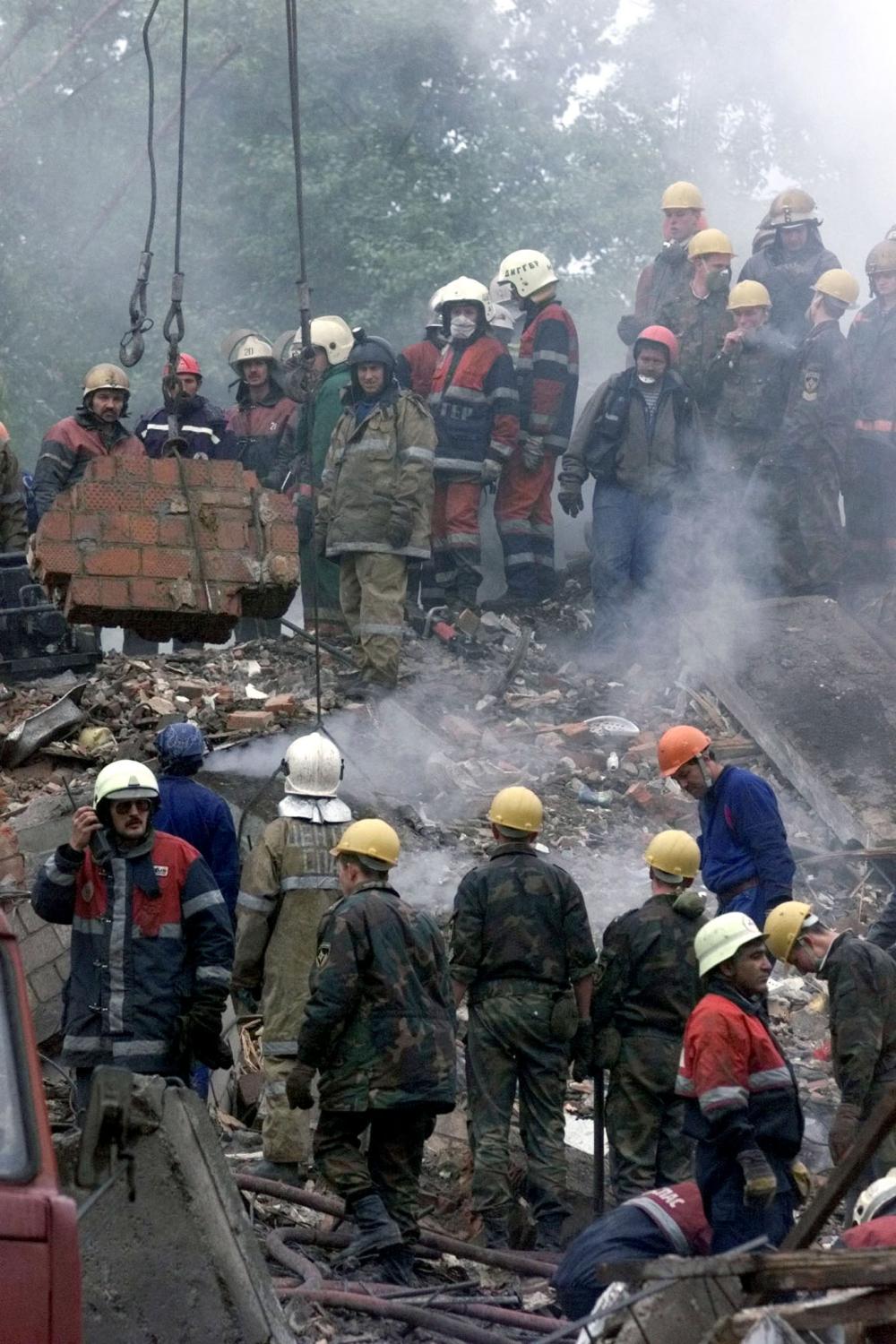
Rescue workers clean up the rubble of an eight-story Moscow building destroyed by a bomb, September 13, 1999. REUTERS.
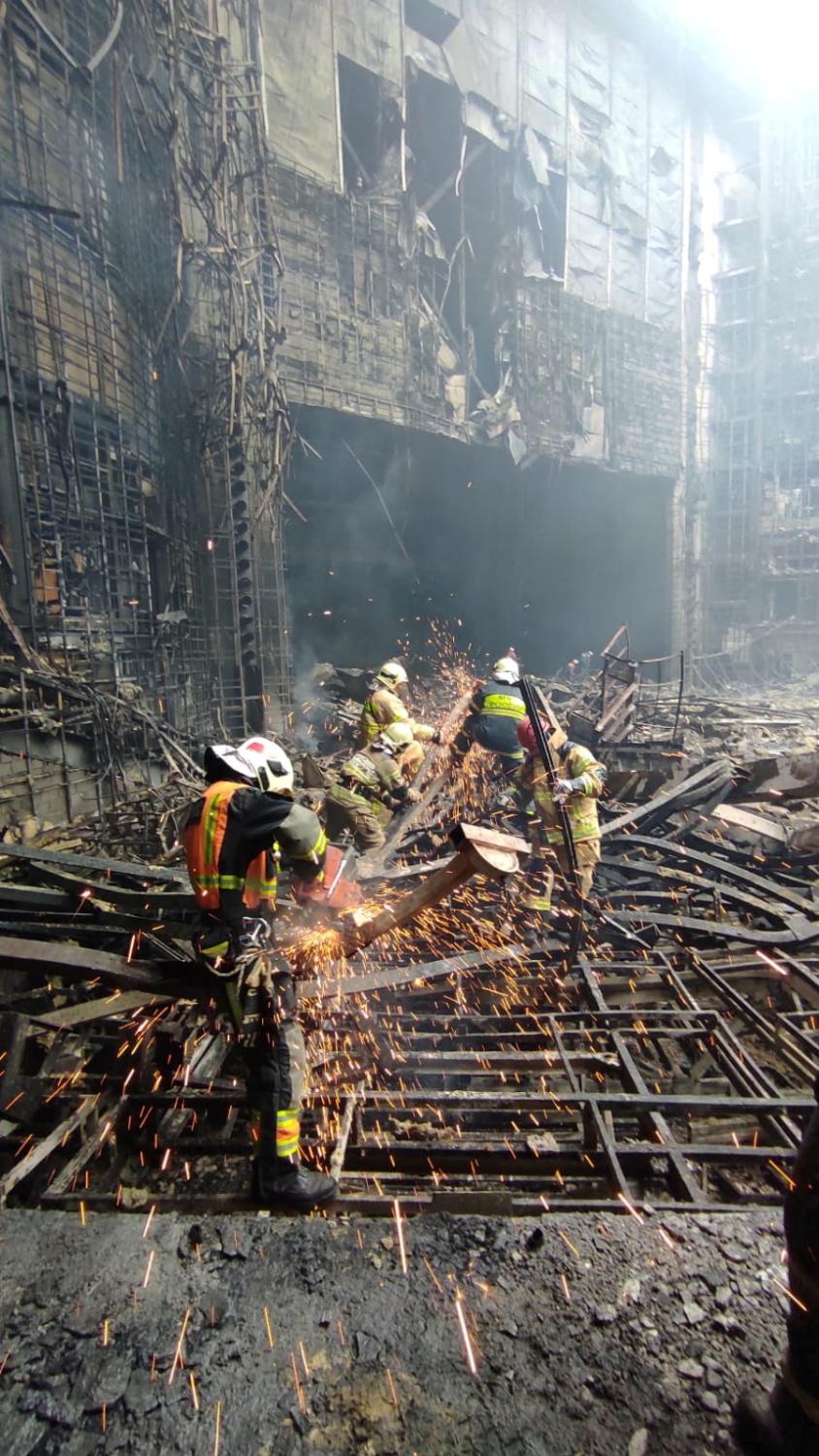
Members of the Russian Emergencies Ministry carry out search and rescue operations at the Crocus City Hall concert venue after a shooting attack and fire, outside Moscow, Russia, March 24, 2024. REUTERS.
Several international developments are also raising the pressure on Moscow. The U.S. Congress’ approval of a long-awaited aid package to Ukraine can potentially open a new path to victory for Kyiv. Together with the funding provided by the European Union and many European states, this support effectively closes the window of superiority that Russia has sought to exploit since the start of 2024, in which it failed to achieve a strategic breakthrough beyond the battle for Avdiivka, despite fierce attacks with heavy casualties. Thus, at a time when the Russian public’s support for perpetual war is eroding, Putin is facing the prospect of yielding the strategic initiative to Ukraine. He may find this future unacceptable.
Putin’s announcement of an exercise for non-strategic nuclear forces makes it probable that Russia may escalate its nuclear brinksmanship in the next few months, and this analysis aims to assess how Moscow’s nuclear blackmail may take shape. It starts with a brief update on the nuclear capabilities that constitute the material basis of Russian strategic planning and proceeds to a short evaluation of how deterrence was applied in the first two years of the war. Consideration is then given to how Russia’s nuclear threats have sought to splinter European solidarity since the start of 2024 and to how Moscow may intensify these threats in response to the renewal of U.S. support to Ukraine.
The nuclear-powered submarine Emperor Alexander III during a flag-raising ceremony at the naval base in the northern city of Severodvinsk, Russia, December 11, 2023. Sputnik/Mikhail Klimentyev/Kremlin via REUTERS.
Upgrades and deficiencies in Russia’s nuclear capabilities
Putin’s recurrent nuclear blackmail is typically rhetorical and not translated into any threatening action, yet it is not entirely without practical content. Putin has a known propensity for bluffing, but he holds a full hand. Russia’s massive investments in modernizing its strategic forces since the early 2010s have yielded many tangible results—and are continuing despite the war in Ukraine’s huge demand for resources. The most expensive project in the State Armament Program is the construction of the Borei-class strategic submarines. In December 2023, Putin proudly presided over the flag-raising ceremony for Emperor Alexander III, the seventh submarine in this class, and the next one, Knyaz Pozharsky, was launched in the Severodvinsk shipyard in February.
This costly upgrade of the sea leg of Russia’s strategic triad has had strikingly little impact on the course of Moscow’s confrontation with the West, and one can argue that greater results could have been achieved by directing investments toward modernizing Russia’s long-range aviation. Presently, the project for designing the stealth PAK-DA bomber has been postponed indefinitely, while the “armada” consisting of about 50 aged Tu-95MS and a dozen more modern Tu-160 bombers performs more combat missions than its maintenance can cope with. Ukrainian drones have repeatedly hit Russia’s Engels air base and other infrastructure, yet the high command prescribes the continuation of regular patrols over the Arctic and engagement in joint exercises with China’s H-6K bombers. One major advance in Russia’s air capabilities is supposed to be the Kh-47M2 Kinzhal hypersonic missile that Putin advertised in his 2018 “wonder-weapons” speech; however, when Russia launched the Kinzhal against Ukraine in January 2024, the strikes were intercepted multiple times by Ukrainian MIM-104 Patriot surface-to-air systems.
The Kinzhal, as well as the short-range 9K720 Iskander ballistic missile and the sea-launched 3M54 Kalibr cruise missile, can be armed with non-strategic nuclear warheads, but there is scarce evidence that Russia is prepared for such strikes. Russia has invested in expanding the production of these missiles, but the explosion at the Votkinsk plant proves that technical problems will limit the feasible output.
New data has emerged confirming Russia’s planning and exercising for the use of non-strategic nuclear weapons in response to hypothetical Chinese aggression in the period of 2008-2014, but while those exercises involved thousands of troops, their nuclear escalation was played only on desks and maps and never proceeded to a simulation. One new development in Russia’s nuclear posture is Moscow’s decision in June 2023 to deploy tactical nuclear weapons in Belarus, which constitutes a violation of the 1991 Presidential Nuclear Initiative. Nevertheless, despite the necessary upgrade to the storage facility near Belarus’ Asipovichy air base in March 2024, there is still no open source evidence that Russian warheads have been moved to this depot. Similarly, the Kolosovka base-level nuclear storage facility in Russia’s Kaliningrad region was modernized in 2016-2018 but there is no evidence of transportation of nuclear warheads there. According to Ukrainian sources, the centralized nuclear storage facility in the frontline Belgorod region has also been empty since mid-2023.
Another dimension of Russia’s possible breach of rules is its preparation for the deployment of nuclear weapons in low-Earth orbit, as revealed in U.S. congressional hearings, and Putin’s denials add to rather than dispel the concerns. The Russian space program is severely curtailed due to underfunding and sanctions, and its operational grouping of satellites is shrinking, so it makes strategic sense to develop capabilities that could disrupt Western communications and intelligence gathering. Russia’s long-standing project to deploy the PL-19 Nudol anti-satellite missile has become obsolete because of the enormous increase in the number of “hostile” satellites, but a nuclear explosion in near space is certain to produce enormous disruption and a heavy political fallout.
How deterrence does and doesn’t work
Russia and the Western coalition have both gained new experience in managing high-risk confrontations throughout the fast-evolving war in Ukraine. Assessing this experience, in which nuclear moves have been almost exclusively made by Russia, suggests that it is necessary to revise how we think about nuclear deterrence, which has evolved from a strategy aimed at preventing war to a more fluid and risk-prone deterrence in bello. While Western experts are cautious and even reluctant to revisit this concept, Moscow has exhibited a demonstrative braggadocio that is quite unlike the Soviet school’s ominous brevity.
The start of Russia’s war in Ukraine signified a shocking mutual deterrence failure: Western leaders were unable to dissuade Putin from launching the aggression, and the Russian autocrat failed to block the formation of a determined Western coalition in support of Ukraine. The West’s failure was absolute as the threats of sanctions and isolation weren’t enough to prevent the war, and because its policy of dissuasion not only lacked but in fact explicitly rejected a credible follow-up to the use of force, which is organic to the strategy of deterrence. In contrast, Putin’s failure was relative: his threat of consequences “never seen in your entire history” sufficed to forestall a NATO intervention but didn’t avert far stronger support for Ukraine than he had imagined. Putin’s “red lines” were crossed again and again as the NATO allies gradually overcame their reservations about supplying Ukraine with various weapons systems. However, Germany still refuses to supply Ukraine with the Taurus KEPD-350 air-launched cruise missile, and the widely expressed worries about a possible escalation of hostilities indicate that Russian deterrence has been modestly successful.
One significant episode in the ongoing recalibration of mutual deterrence was the battle for Kherson in autumn 2022, in which the Russian forces on the west bank of the Dnipro River were hard-pressed by superior Ukrainian forces, while their supply lines were repeatedly hit by U.S.-supplied M142 HIMARS missiles. The situation became so desperate that Russia’s high command in Moscow allegedly contemplated a nuclear strike—and U.S. leaders “rigorously” prepared (as became known in spring 2024) to prevent that option. Diplomacy was one part of that prevention: In November 2022, Jake Sullivan, the U.S. national security advisor, talked with his Russian counterpart, Nikolai Patrushev, while CIA Director William Burns met in Ankara with Sergei Naryshkin, director of the Foreign Intelligence Service.
What possibly constituted a more important part of that risk management was the Ukrainian command’s decision to allow 25,000 Russian soldiers to make an orderly withdrawal from Kherson, which was accomplished in a few days over two previously damaged bridges. That decision was never advertised, and it is unclear whether any U.S. counsel influenced it, unlike for instance, the Biden administration’s “advice” to stop drone attacks on Russian oil refineries in the spring of 2024, which was obviously rejected. Ukraine’s former commander-in-chief, General Valerii Zaluzhnyi, didn’t mention that decision in his November 2023 Economist article on the stalemate in the war, or indeed after his dismissal in February 2024. No other explanation, however, could account for the remarkable success of that fighting retreat under the command of Russian General Sergei Surovikin, who also directed the construction of the strong defensive positions that stopped the Ukrainian counteroffensive in summer 2023.
Yet another part of the U.S. strategy of preventing nuclear escalation was engagement with China, starting with the high-level meeting between U.S. President Joe Biden and Chinese President Xi Jinping at the G20 summit in Bali in November 2022. Xi not only issued some vague public statements on the unacceptability of nuclear threats but directly dissuaded Putin from contemplating a nuclear strike. Moscow is very attentive to the nuclear dialogue between the United States and China. That makes it essential that Beijing continues signaling to Moscow, as it most recently had in March 2024, even if direct communications between Putin and Xi are presently a rare occurrence—their planned meeting in May notwithstanding.
The EU and Ukrainian flags are being displayed during a press conference in Kyiv, Ukraine, on May 9, 2024, amid Russia’s invasion of Ukraine. STR via Reuters Connect.
Nuclear threats against European resolve
Russia’s high command appears satisfied with the trajectory of its combat operations in 2024, so it is unlikely to try to break through Ukrainian defenses by applying nuclear instruments. Nevertheless, Putin did escalate his nuclear rhetoric in the last weeks of his reelection campaign, even if there was obviously no need for such grandstanding in order to ensure the result, which was effectively produced by unprecedented fraud. What triggered Putin’s renewed nuclear blackmail was French President Emmanuel Macron’s provocative remarks at a Paris security conference in late February refusing to rule out the deployment of troops into Ukraine, which had surprised many of the Western participants and received pushback from the United States, Germany, and others. Putin devoted a passage in his annual address to the Federal Assembly to countering Macron’s remarks with a reminder about the long reach of Russia’s nuclear weapons and the possibly resulting destruction of civilization. Mainstream commentators in Moscow unleashed a barrage of scorn and ridicule on Macron, but Putin (who didn’t actually mention names) aimed more at the differences between France and Germany on the risks of support for Ukraine that are repeatedly exposed by every French elaboration on conditions for a direct intervention.
Putin’s nuclear messaging impressed some experts in Beijing but, contrary to his intentions, prompted European policymakers to rally. Germany’s reservations were downplayed as Chancellor Olaf Scholz and Polish Prime Minister Donald Tusk held a meeting with Macron and confirmed that support for Ukraine would be expanded. The U.S. House of Representatives’ delay in approving the aid package to Ukraine compelled the European stakeholders to face the possibility of Russia’s victory in the war. Macron’s proposal is one answer to this challenge; Czech President Petr Pavel’s initiative on pulling funds for purchasing and delivering 800,000 artillery shells to Ukraine is another. Yet, following the passage of Ukrainian legislation lowering the draft age from 27 to 25, the training of new Ukrainian brigades might eliminate the need for debates on deploying NATO troops to the battlefield.
Europe’s reinvigorated unity on rehabilitating its defense industry is an unexpected consequence of Russia’s aggression and nuclear blackmail. Putin tried to reinforce his pressure by claiming that Russia was ready for a nuclear war, which falls only a little short of the argument advanced by Sergei Karaganov and others that Russia should strengthen deterrence by delivering several preventative nuclear strikes on NATO countries. These verbal escapades failed to fan nuclear fears in Europe, and Polish President Andrzej Duda declared that his country was ready to host nuclear weapons. Alexander Stubb, Finland’s newly elected president, confirmed that NATO’s nuclear deterrent “must be real” for Finland and that Helsinki could consider altering its legislation to permit hosting nuclear weapons on its territory. Russia announced a plan to deploy a brigade of nuclear-capable Iskander-M tactical missiles in Karelia, seeking to show that its threats are followed by deeds (which might never be implemented), but the relative deterioration of Russia’s position in the Baltic theater is set to deepen as the war in Ukraine keeps degrading its military might. The diminished effectiveness of Putin’s rhetoric prompted him to announce an exercise for non-strategic nuclear forces—the first of a kind—presenting it as a response to expanded European support for Ukraine and making this move on the day when Xi Jinping started his state visit in France.
In the photos taken on April 25, 2024, members of the Ukrainian Armed Forces are deployed in the middle of the conflict with Russia. Handout/Latin America News Agency via Reuters Connect.
Turning deterrence into a winning strategy
The arrival of U.S. weapons and ammunition to Ukraine after the long-delayed passage of the Ukraine supplemental bill by Congress may mark a turning point in the war, and the Kremlin is not ready for it. Moscow has sought to disrupt Europe’s collective effort at rebuilding its capacity for defense and deterrence with its nuclear signals, but these actions have instead prompted greater Western resolve. As long as the situation in the Donbas remains favorable for Russian forces, Putin’s persistent references to nuclear war will continue to be treated as a tired bluff and the exercises will hardly make any difference.
While some experts consider the prospect of a Russian summer offensive to be imminent, its probable failure may exhaust the potential for sustaining the attacks and pave the way for a new Ukrainian counter-offensive. A sequence of possible tactical setbacks signifying the loss of strategic initiative could compel the Kremlin to prove that there is some real substance behind its nuclear rhetoric. Even small territorial gains by the Ukrainian forces combined with the threat posed by the expected delivery of several new squadrons of F-16 fighters and steadily increasing Ukrainian strikes deep inside Russia may raise the specter of looming defeat for the Kremlin. The threats to deliver strikes on the NATO air bases supporting the deployment of F-16s indicate that concerns in the Russian high command about the impact of these versatile air platforms are deepening. Putin places a strong emphasis on holding the strategic initiative, and a threat to Russia’s ability to control the course of combat operations may drive him to make a mistake comparable to the blunder of launching the invasion into Ukraine.
Ordering a nuclear strike on Ukraine would be an extreme error, which can only be caused by some extraordinary confluence of external misfortunes and domestic turmoil. Russia’s leader has a range of less risky options, including the determination that the long war of attrition in Ukraine requires a more thorough preparation of the strategic arsenal by resuming nuclear testing. This breach of legal obligations and international norms is certain to damage Russia’s prestige; nevertheless, Karaganov and other “patriotic” pundits are advocating this step up the escalation ladder as a means of restoring the potency of the fear factor. Conducting an underground explosion at the Novaya Zemlya test site would require significant investment and construction, and no signs of such preparations have been detected so far. The detonation of a nuclear munition in space is another feasible option, and Russia’s veto of a draft U.N. Security Council resolution prepared by the United States and Japan aimed at reinforcing the ban on military activities in space established by the Outer Space Treaty of 1967 may be an indication of such intent.
Proactive diplomacy is essential but not sufficient for preventing such Russian nuclear moves, and every crossing of Putin’s presumed “red lines” (of which many are already erased) needs to be combined with a convincing demonstration of Western resolve to deliver a set of further countermeasures. The strategy of deterrence remains, as Rose Gottemoeller insightfully reminds, a “mind game,” and the task of deciphering Putin’s risk calculus can never be accomplished with certainty. He is prone to misinterpreting U.S. messaging, and the channels of communication with his lieutenants are far from reliable. Yet the Kremlin remains attentive to signals coming from Beijing, so engaging with China on the theme of the war in Ukraine is crucially important for the United States and all allies. It is typically assumed that China would not accept the prospect of Russia’s defeat in Ukraine, but a recent article by the leading Chinese Russia scholar Feng Yujun (unanimously ignored by Russian commentators) indicates that this is not necessarily the case.
NATO’s commitment to supporting Ukraine is set to be strengthened at the Washington summit in July. This resolve is reinforced by the allocation of new resources. The fact that Putin’s regime is responding to all this with increasingly operatic and irresponsible nuclear bluster in a rapidly evolving crisis requires strong nerves and strategic courage from Ukraine and its Western supporters.
The Brookings Institution is committed to quality, independence, and impact.
We are supported by a diverse array of funders. In line with our values and policies, each Brookings publication represents the sole views of its author(s).
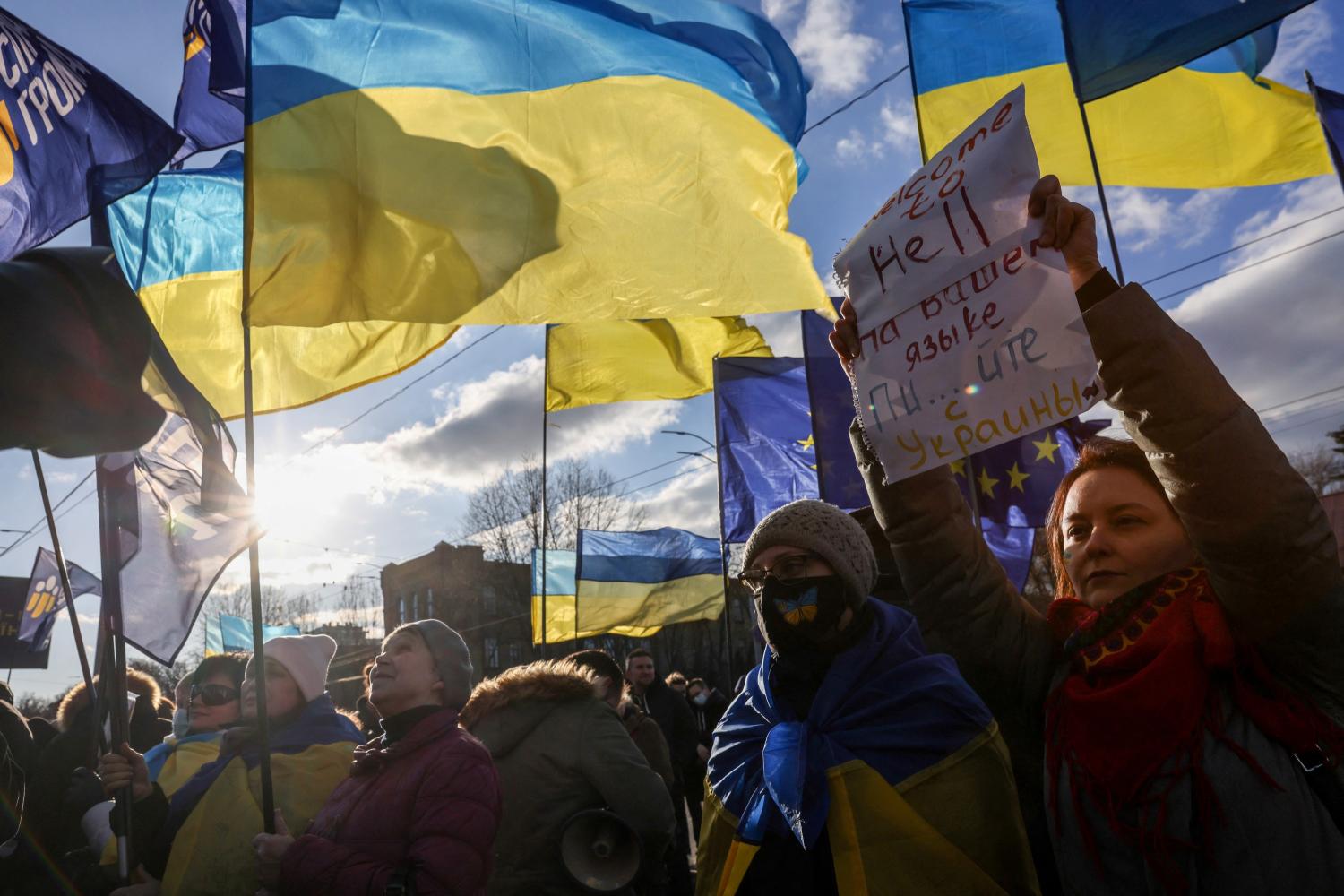
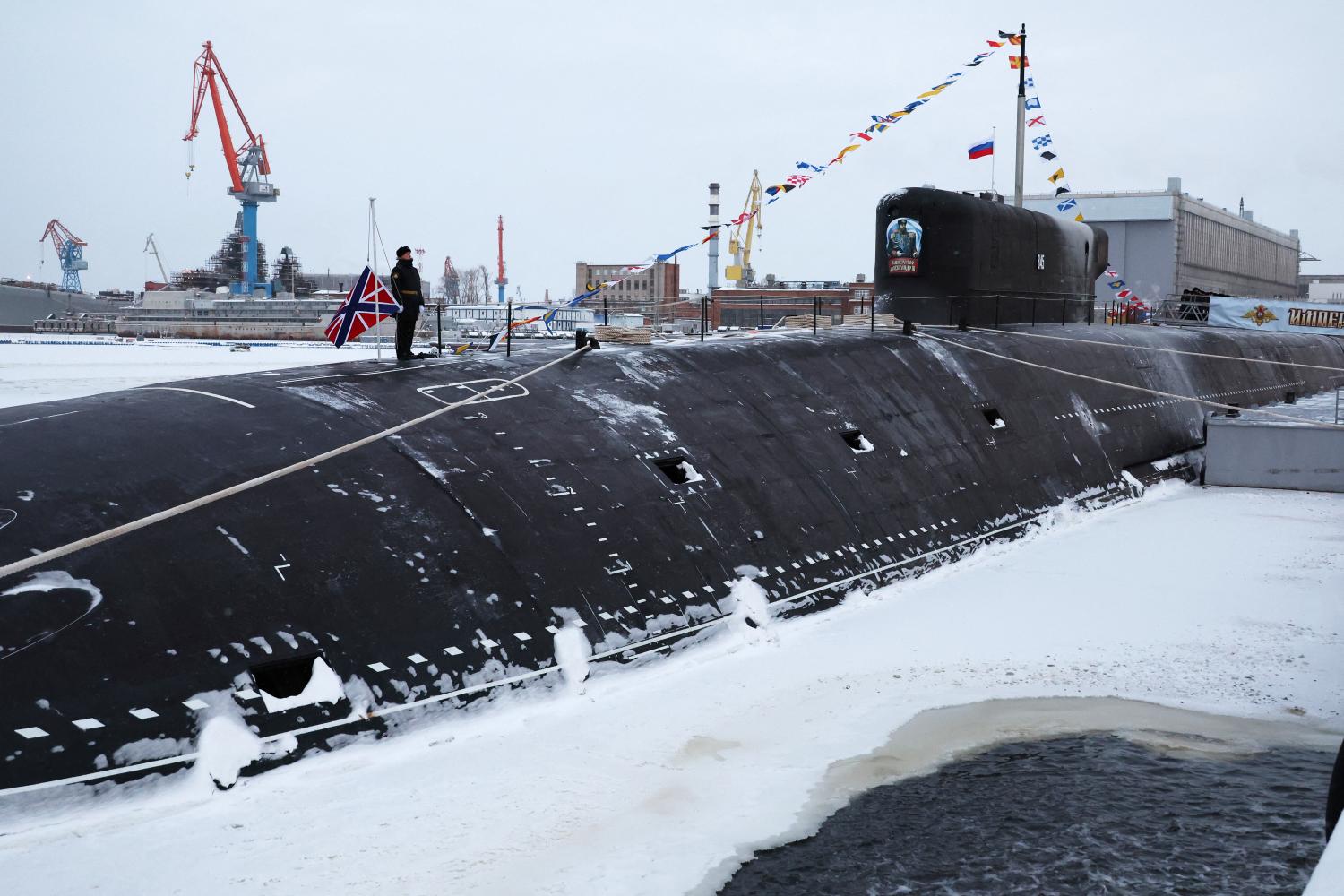
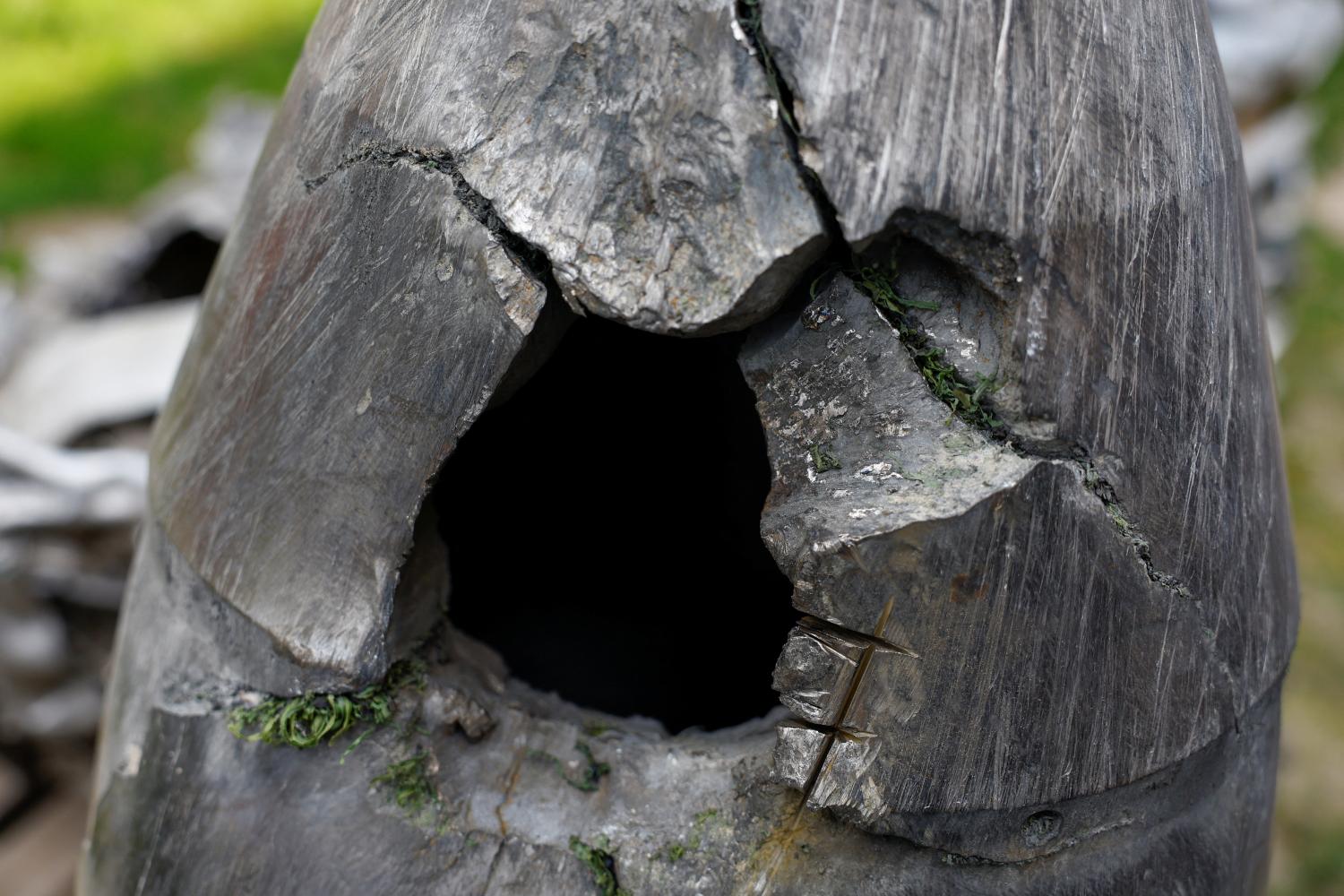
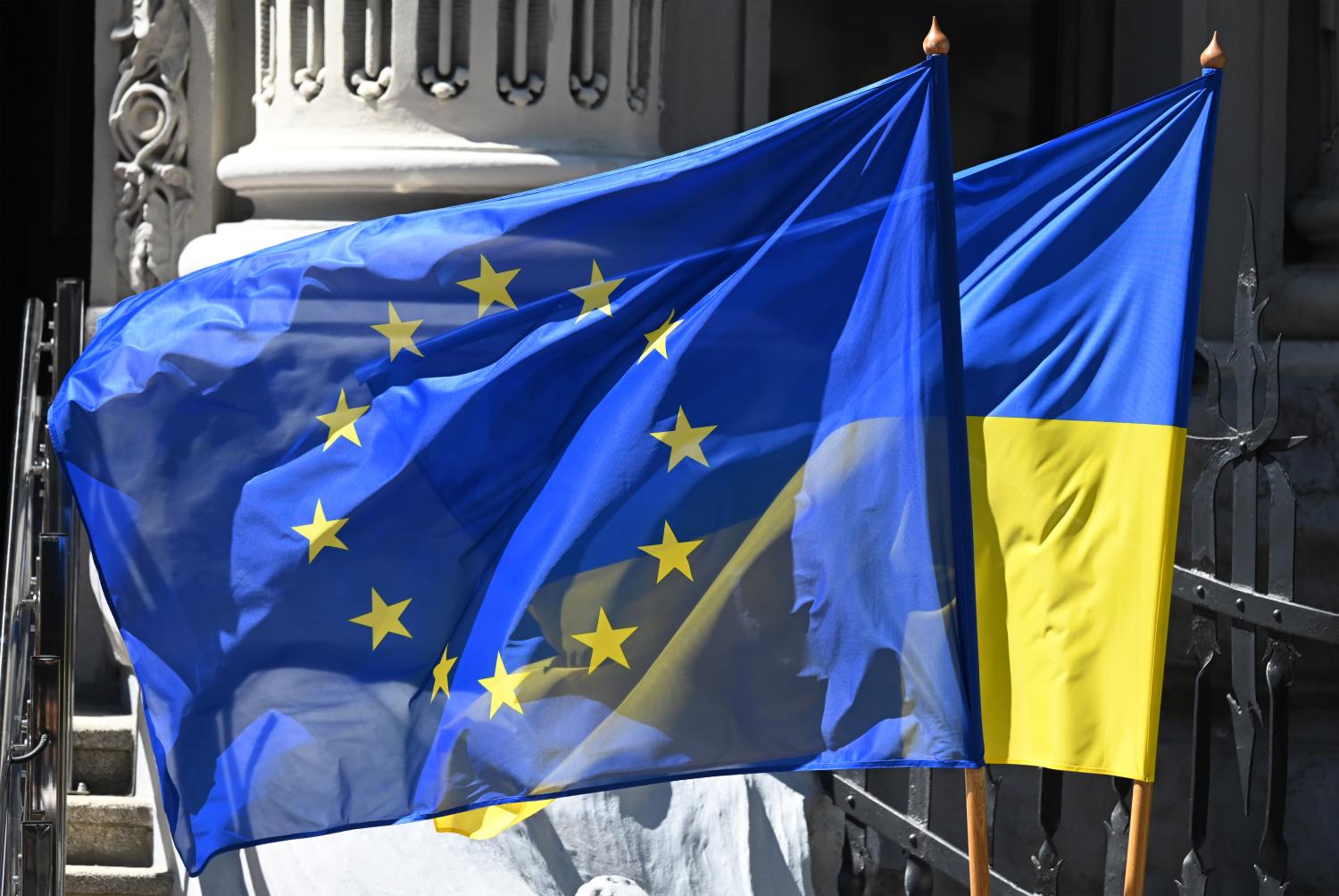
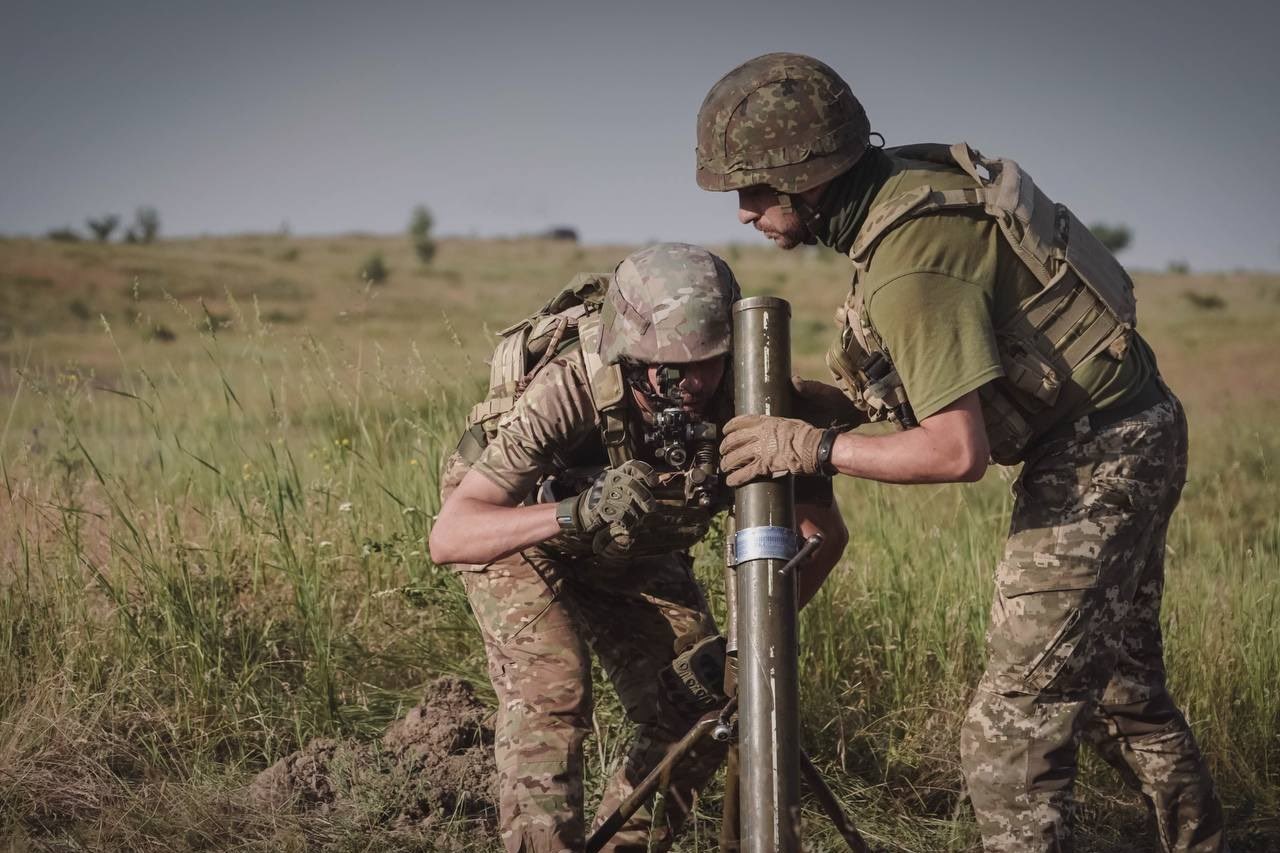

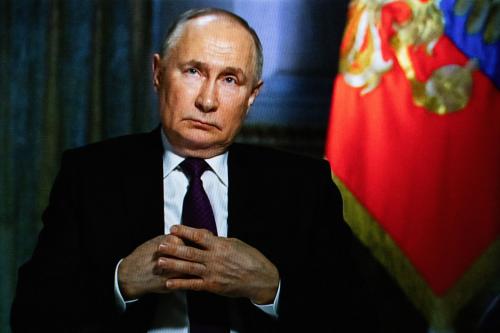

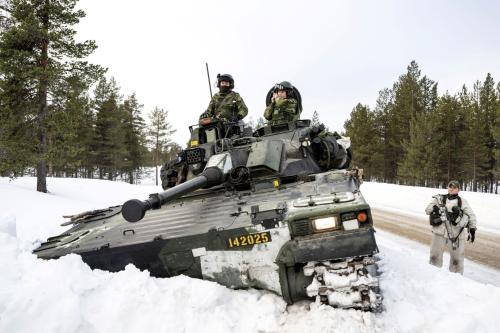
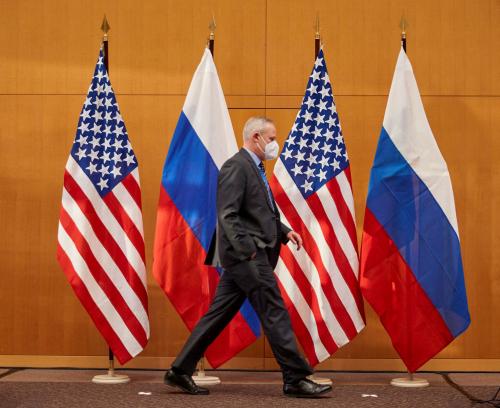
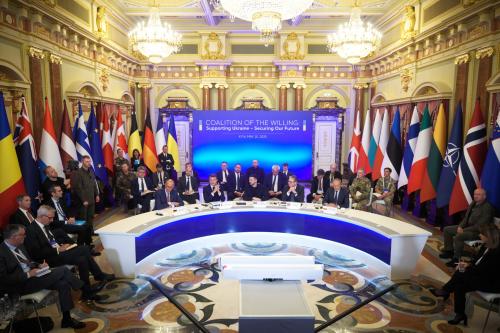
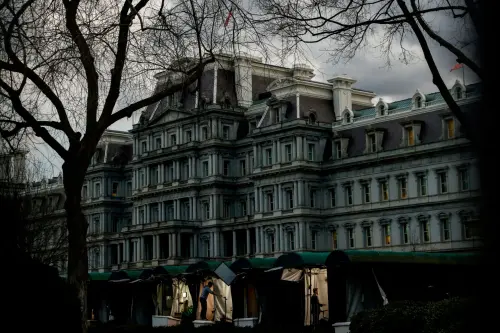
Commentary
Nuclear brinkmanship in Putin’s war: Upping the ante
May 14, 2024